


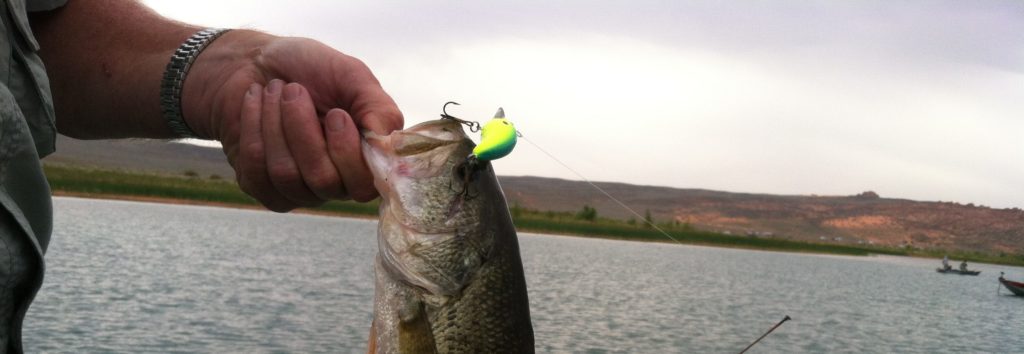
Bass fishing a crankbait is a ton of fun, but it’s a nightmare to figure out. The problem is there are so many varieties of them you can use. Plus, with all the info out there on what’s best, it’s really hard to know how to get started. After years of fishing them, I have uncovered some key tricks to catch more fish on a crankbait. My goal for you is, after reading this post and watching the video below, you will effortlessly get through the crankbait fishing nightmares and start “Kraken” more bass!
Understanding how to use a crankbait is essential to be able to catch bass on one. The easy part of fishing a crankbait is that you can simply throw it out and start reeling it back. The bait will wiggle back and forth as the bill of the crankbait pushes the water while you retrieve it. The further you cast and the longer you reel your lure, the deeper it will dive. The type of bill on your lure can push a crankbait deeper faster, or keep the bait running shallower. Make sure to continue reading the section below on the different types of crankbait. This will help you know how the different types of bills can affect their action.
The most important factor to remember about bass fishing crankbait is to always have your bait banging against both the bottom and the cover you are fishing. This was a difficult concept for me to swallow when I first started using crankbaits since those exposed treble hooks look like they would hang up all the time. The key is to know what type of hardcover a crankbait works best around–such as rock and stumps–so you don’t hang up. Crankbaits are designed specifically to bounce and grind off the bottom and cover. Thicker pieces of timber, stumps, and rock are traditionally the best types of cover to bang your crankbait on. I finally started catching more bass on crankbaits when my lures were consistently banging or bouncing off the bottom and cover.
I see a lot of people struggle with more than just crankbait fishing to catch bass. You need to know the right line, rod, and how bass behave to really catch bass better than others. Register below to get a simple foundational system to become a better fisherman.
There are 3 indications you need to look for to determine whether you should bust out your crankbait out or not: weather, water temperature, and fish depth. Each plays a big role in whether you will have a banner-day on this bass fishing lure or a total wipeout. Here are some guidelines about these 3 indicators to help you know when to use one.
With the weather, cloudy or windy conditions is when this lures works the best. When you’re out on flat, calm, sunny days, keep your crankbaits in the box–unless it’s early morning or late evening. Low light conditions are often another good trigger for a good bite on crankbaits.
Crankbaits are at their best as water temperatures are warming in the spring or cooling in the fall. Crankbaits require more energy for bass to chase down and eat. In warmer water, the bass are more likely to reach out for them, whereas in the wintertime, when it’s cold, they tend to not eat them as well because they are not willing to go for the chase. A bass’ cold-blooded nature causes their metabolisms to either speed up or slow down with the change in water temperature. Thus, the water temperature will be a major player in fishing crankbaits.
When bass are holding deeper than 20 feet, it is extremely difficult to get your crankbaits deep diving down to bang off the bottom. You can do it, but it requires extremely long casts and big, deep crankbaits. The best depth for fishing crankbaits is 15 feet or less. This makes bumping and bouncing off the cover less difficult with the right crankbait. How deep you are fishing is a big indicator as to whether a crankbait would be a good choice.
I love to help people become better bass fisherman. Crankbait lures are one of many things that will help you catch more fish. You can see all the secret foundational things pro’s glance over in my quick easy course. Save yourself the hassle of sorting through hours of content on line, and sign up for the waitlist for the next course launch.
Crankbaits–or Hard Baits as they are often referred to–can be broken down into 5 types in 3 different styles. Understanding these different groupings of crankbaits by type and style will help you get a better idea of what crankbaits will work best in whatever situation you find yourself fishing. There are a lot of crankbaits on the market. Luckily, manufacturers of crankbaits label them pretty clearly. You should be able to quickly identify which type of crankbait you are purchasing. Here are all the types and styles spelled out, with a little bit about which crankbaits work best for each of these common types of crankbaits.
I find remembering all these little details can be quite challenging. Check out my crankbait selector chart to make it easy on you to know exactly what crankbait you should throw to catch more bass.
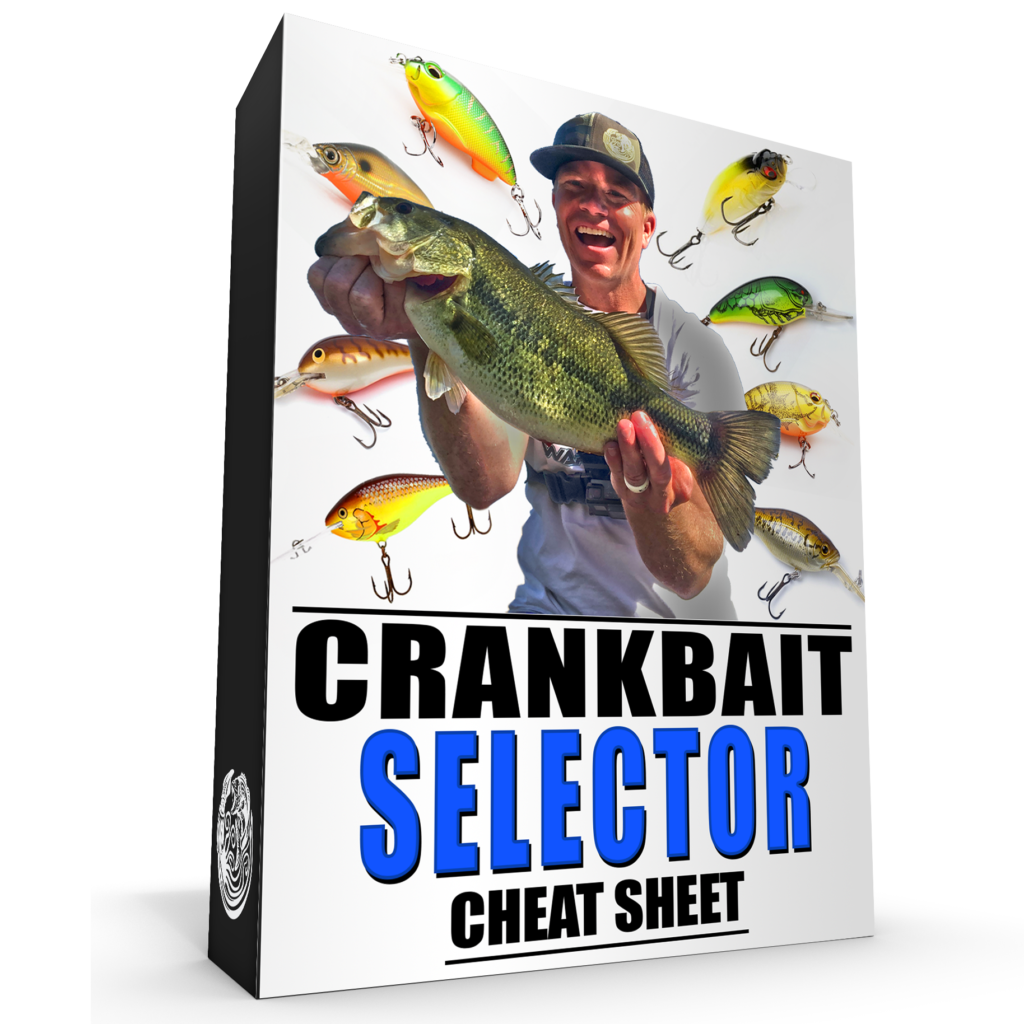
Shallow diving crankbaits have small bills on the body of the bait and typically only run 0-5 feet deep. A square bill crankbait is typically the most commonly used of the shallow diving variety. The square bill crankbait is used most often because of how well it deflects and bounces off of shallow cover. Some of my favorite shallow diving crankbaits are the Jackall MC, Lucky Craft 1.5, and the Megabass S-Crank. These square bill crankbaits have caught some good bass for me as they bang the bottom in shallow rock-type cover.
Medium diving crankbaits have slightly longer bills on the front. These crankbaits effectively dive down anywhere from 5-12 feet. Some solid medium diving crankbaits are the Megabass Cyclone, Strike King 3XD, and Strike King 5XD. A good medium diving crankbait can get the job done when the bass aren’t sitting in the shallow stuff and seem to be holding a little deeper along the edges.
Deep diving crankbaits have even bigger bills and are quite a bit beefier than the medium or shallow diving crankbaits. Usually, you need beefed-up gear to throw one of these babies around. Deep diving crankbaits are best used anywhere from 12-20 feet deep, amazing for diving down to bounce off the bottom or cover. The 6th Sense Crush, Strike King 8XD, and the Lucky Strike Freak are good examples of deep diving crankbaits for catching some serious bass.
Lipless crankbaits don’t have a bill at all. They sink down and have a tight vibrating action on the retrieve because of the small, flat surface on the top of the crankbait. Lipless crankbaits tend to work best when fishing around grass. Ripping a lipless crankbait over the top of grassy vegetation is a popular method for catching bass. A lipless crankbait can be fished at any depth. They typically come in heavier sizes for fishing deep and lighter sizes for fishing shallower. Two solid lipless crankbaits worth trying are the Strike King Red Eye Shad and the Jackall TN Series.
Jerkbaits are a type of crankbait that suspend in the water and use a twitch-pause action. These crankbaits are often used in cold water to imitate dying baitfish. Depending on the size of the bill, the deepest they go is approximately 12 feet, but most jerkbaits have small bills and only dive down to about 5 feet, then the suspend in the water on the pause. Good jerkbaits are the Lucky Craft Pointers and Megabass Vision 110’s. These types of crankbaits perform well for catching tight-lipped bass.
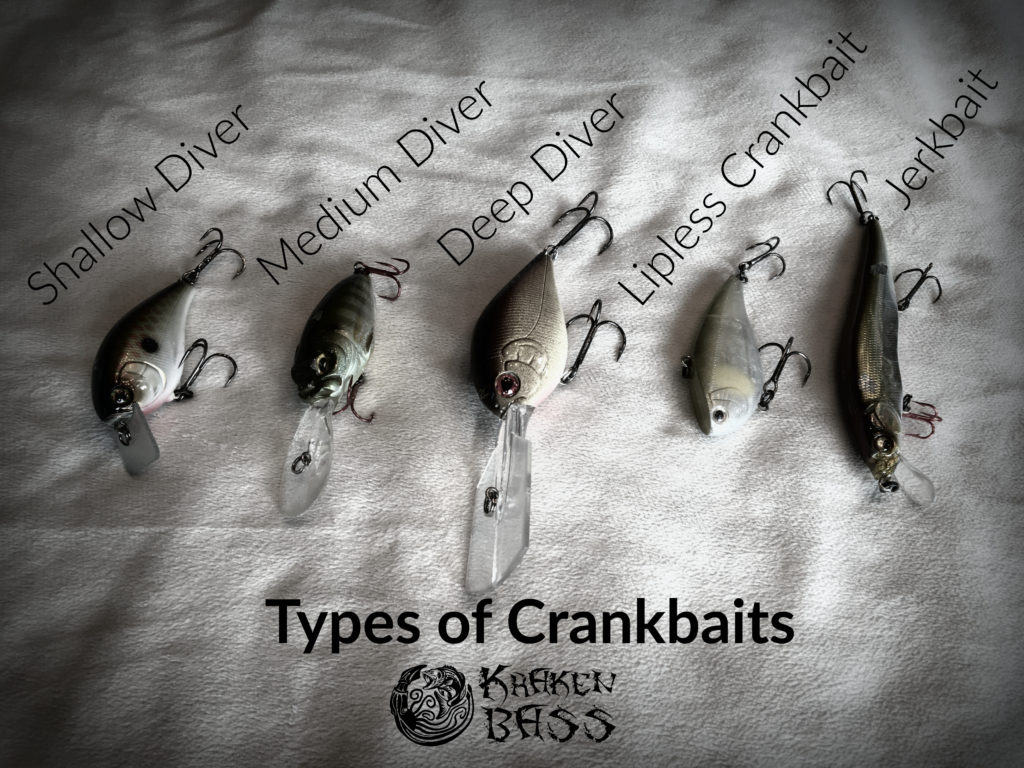
There are an additional 4 main styles of bass fishing crankbaits. It’s important to remember the difference between those mentioned above and the actions listed here. Understanding the action of each of these crankbaits is essential to help you know what to look for when choosing the perfect lure.
Tight vibrating or wobbling crankbaits don’t move as much from side to side. They have a quicker vibrating action. Typically, this style of crankbait has a thinner body type; the bill or lip of the bait is thinner as well. Most often, the tight vibrating crankbaits outperform their wide-wobbling counterparts–especially in colder water temperatures.
Wide vibrating or wobbling crankbaits have a bigger side-to-side movement as they come through the water. Usually, a wide wobbling crankbait will have a bigger, rounder body style. These types of crankbaits also have wider bills to push through a little more water. The wide wobbling crankbaits work best in warmer water temperatures. They also work well for getting a bass’ attention because of the amount of disturbance they make as they push through the water. These baits can also be good to attract bites at night and in stained water.
The majority of bass fishing crankbaits have different types of rattles inside of them to make some noise–hopefully attracting some bass. Rattles in these crankbaits come in all sorts, from large and small to tungsten and brass. All you have to do is shake a crankbait in its box to hear what sound will emit in the water when you reel it. Rattling style crankbaits work best in dirty and stained water, or any other time you need extra attention on your lure to attract strikes.
More and more silent style crankbaits are becoming available. These crankbaits don’t have any rattles. The only sound they produce is the slight noise of the hook as it bangs against the side of the bait as you reel it in. This style of crankbait works best in clear water and highly pressured lakes.
I find you can waste a lot of time and money trying things that won’t work. Do you know why what you are doing isn’t working? You can change that immediately by joining my course to become a better bass fisherman fast. Give yourself a system to always know how to adjust to catch bass others are missing out on.
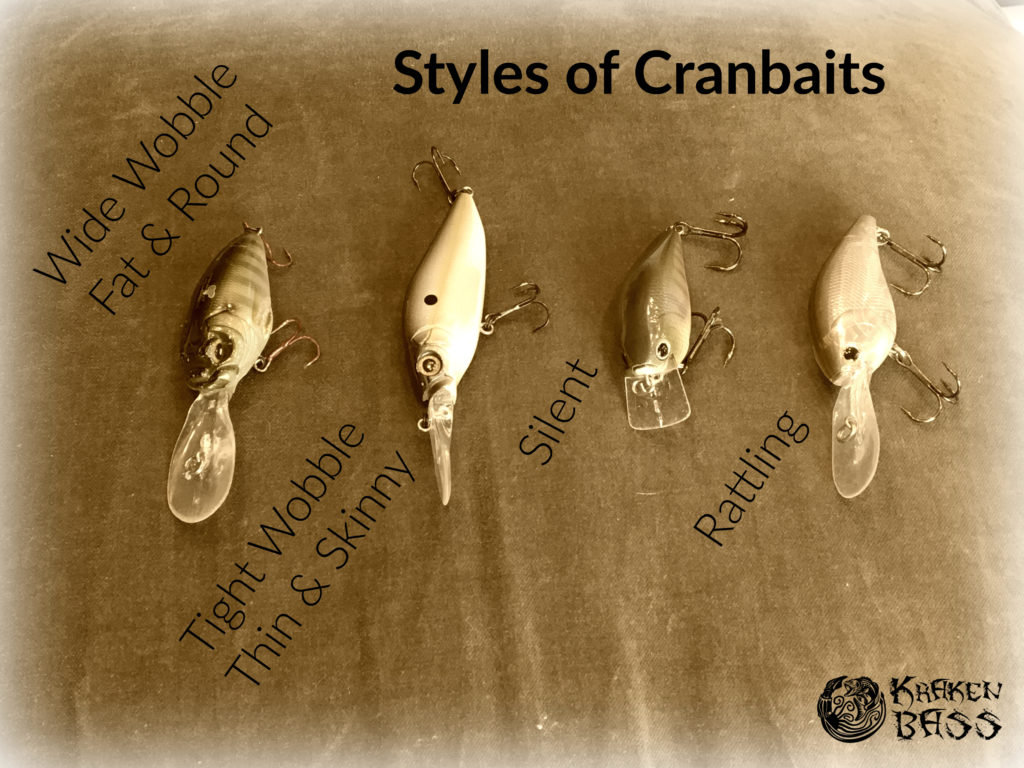
Holy snap, there are so many crankbaits! How do you know what to use in the condition you’re fishing? I’ve got you. This section of the article will walk you through a simple process of how I know-and you will soon know–what crankbait will work best. Remember, generally speaking, a crankbait will work best on windy or cloudy days. Then analyze these 3 factors on the water listed below to help guide you in deciding which crankbait type and action you should pull from your box.
I find it can be really confusing to know what to use. You can cut through the clutter of all the stuff about bass fishing to become confident enough to begin entering tournaments, and having a lot more fun catching fish through the foundations of bass fishing course. Join the waitlist for the next course launch. It is always being made better, and will make you better.
Clear water, stained water, or dirty water all play a part in deciding the type and style of crankbait you should use. Deciding on what color to use, my post on the best colors for bass fishing will take care of that question. As for which type and style of crankbait depending on the different types of water clarity, there’s a lot of variance.
In clear water, use tighter vibrating and silent style crankbaits. These appear more natural in the water and produce more bites when bass rely more on their eyes for eating. When fishing in stained water, a tight vibration style with some noise is a good option. You may choose to use a wide wobble crankbait with no rattles too. These styles in stained water don’t overpower the natural sounds in the water, but do just enough extra to get noticed. In dirty water, you should be using wide wobbling shallow square bill type crankbaits. Bass typically don’t live as deep in dirty water, so a good wide wobbling square bill with rattles will help you draw strikes on crankbaits.
Water temperature is a key ingredient to knowing whether you should use a tight vibration or a wide wobble crankbait. In cold water, the tight vibrating crankbaits perform best. In the warm waters–above 65 degrees–use your wider wobble crankbaits. The wide wobble will produce more bites when the fish are more active in the warmer months of the year. Lipless crankbaits and jerkbaits outperform the others in the coldest water temperatures. Their tight action really helps draw strikes when conditions are tough.
How deep you want to fish is the best determining factor when deciding what crankbait to use. If you are fishing really shallow, use the shallow divers. When bass are holding 5-12 feet deep, start using your medium diving lures. When you want to fish deeper–from 12-20 feet–start throwing your deep diving crankbaits.
Evaluating water clarity and water temperature will help you determine the Action whereas evaluating the depth you are fishing should help you determine the Type you should use.
This video will show you how I fish for bass on crankbaits effectively. This video is aimed to allow you to observe what I do so you will better know how and when to use crankbait to catch more bass. By learning the right way to fish with these crankbaits, you will catch a lot more bass and see greater success catching fish on your day at the lake.
Crankbait fishing for bass can be really hit or miss sometimes. With these tips, you will be able to hit more times than you miss. Please leave a comment below about your experience fishing crankbaits. I’m always trying to improve my crankbait game and your personal experiences and thoughts are always appreciated. Don’t forget to subscribe to the blog for epic content to help you “Krak” some bass!
As Always,
Stay Stoked!!
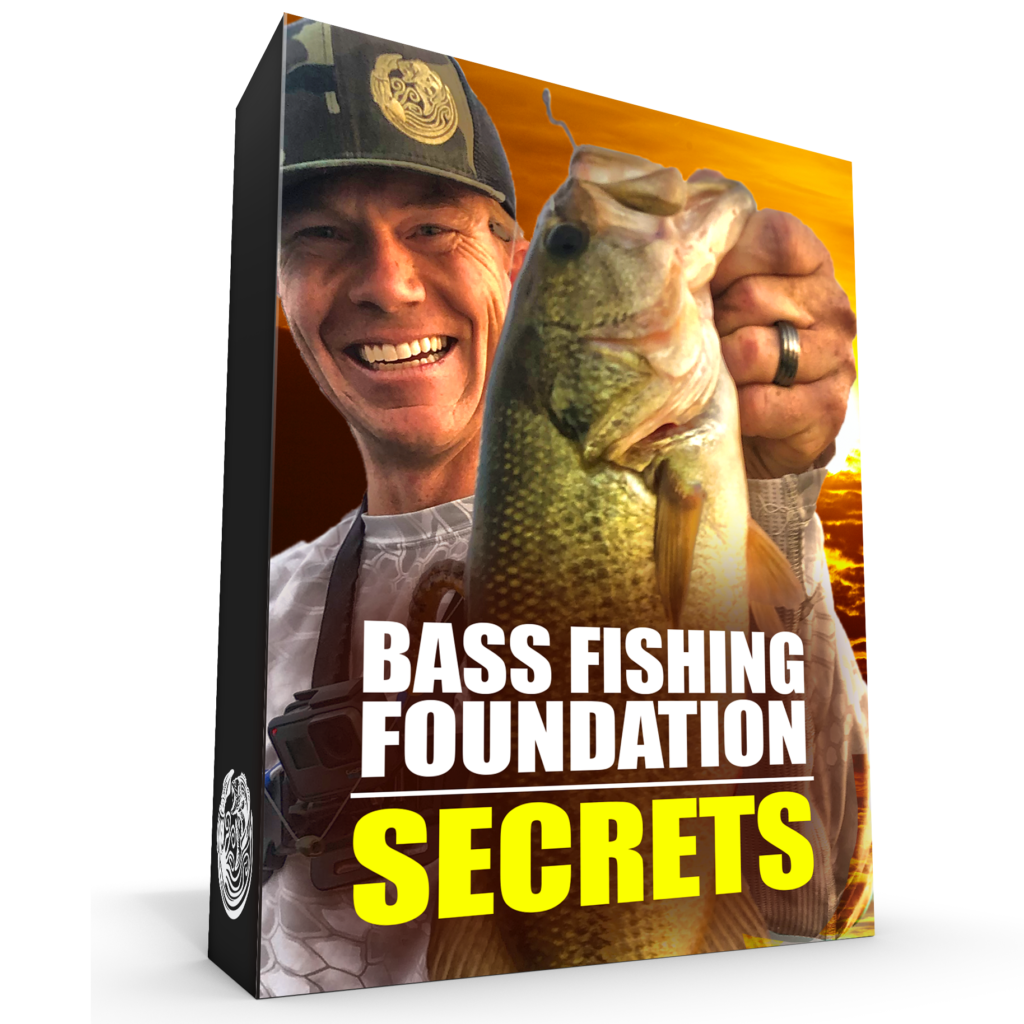
You need a system to know where to go, what to use and how to work your lures to catch more bass in every situation.
Use this lure color selection chart and perfectly match the color of your lure to what bass are wired to eat without trial and error so you can catch the monsters!
Discover how to perfectly match the color of your lure to what bass are wired to eat so you can catch the monsters!
This is how to entice bass to bite and catch bass on every fishing trip!
Discover how to perfectly match the color of your lure to what bass are wired to eat so you can catch the monsters!
4 Responses
What colors to use in dirty and stained water??
What colors for stained ( clearity) is 12 inches do I use.
Use something bright like white and chartreuse. For help with lure colors make sure to get my free lure color selection chart –> https://bit.ly/colorchartfree
JB thanks for the info.